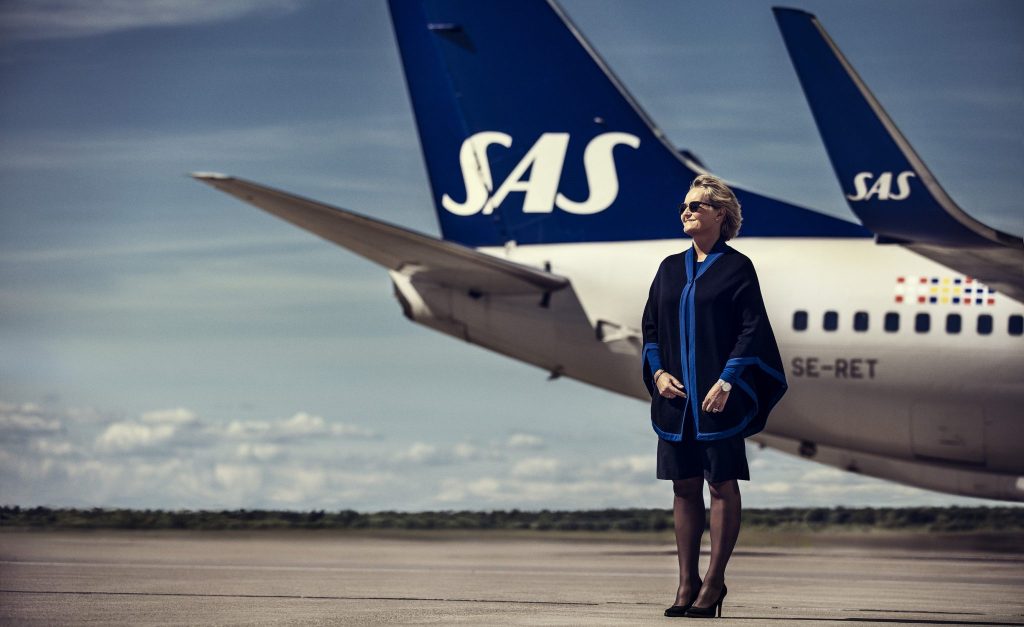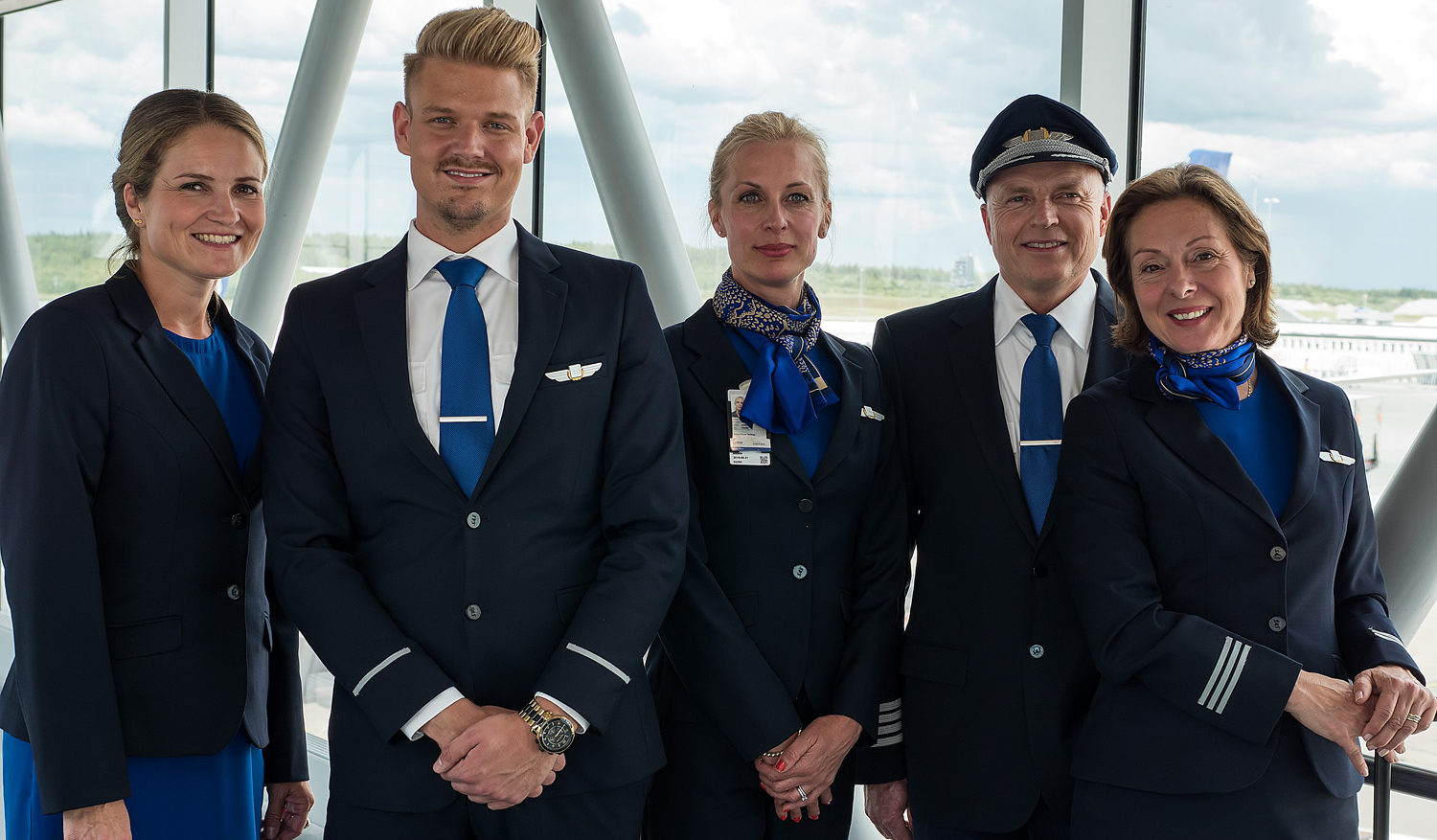When is a brand new airline not new at all? It’s an interesting question but not a trick at all – because that’s exactly what’s happening with Scandinavian carrier SAS’s new Irish airline which has been aptly named Scandinavian Airlines Ireland. So while the Irish operation will have nine new aircraft and lots of freshly hired staff, everything else is going to be decidedly old.
In fact, if you were a passenger you probably wouldn’t know the airline was new at all. As background, SAS is the 71-year-old, Scandinavian airline with a rich history acting as the flag-carrier for Denmark, Norway and Sweden. Last year, the airline flew 29 million passengers to 118 destinations around the world.
Meanwhile, Scandinavian Airlines Ireland was only set up in January and won’t begin flying until November 2017. So how can you tell the old airline from the new? It’s going to be difficult – Cabin crew will wear the same uniform, the aircraft will be painted in the same colours and the airline will be flying the exact same routes. Both airlines will even share the same website.
So what’s the point? To put it simply – money. Or to be more precise, to save money. SAS has been struggling for years and in April the airline announced it would be doubling its efficiency measures in an effort to turn its fortunes around. As SAS’s chief executive, Rickard Gustafson, put it in the airline’s annual report: “profitability remains too low and must be raised.”
New Airline Designed to Lower Labour Costs
Scandinavia was one of the first European markets to experience deregulation in the aviation sector during the 1990’s. The low-cost carriers like Ryanair and Norwegian entered the market and they took passengers with them. SAS claims the LCC’s can offer lower fares because they have much smaller overheads – But SAS argues it can’t keep pace because labour costs in Scandinavia are so expensive.
This is what SAS had to say about the matter:
“All of SAS’s competitors on traffic flows to and from Europe use almost exclusively crew based in EU countries outside of Scandinavia and as result have a lower total cost for labor.
If SAS is to secure the long-term profitability of key traffic flows and actively participate in the growing market, SAS must have the same preconditions. Otherwise, SAS will be forced to reduce its production and discontinue routes.”

Setting Up Business in Ireland
So SAS is ripping a page straight out of low-cost carrier, Norwegian’s book of business – set up an airline business in Ireland. But why the Emerald Isle? Well, Ireland has been more than happy to welcome foreign companies into its low tax environment. And it supports those businesses by issuing the licenses they need to operate with little fuss.
Take the Air Operators Certificate as an example – Every airline needs an (AOC) to legally fly their aircraft. An AOC is issued by a country’s national aviation authority and holds the airline to the laws of the country in which it is issued. Ireland quickly awarded Norwegian an AOC, despite protests from U.S. airlines and it has done the same for SAS.
New Airline Will Fly Existing SAS Routes
The good news for SAS is that Ireland’s employment laws are a lot less strict than those in Scandinavian countries. SAS plans to save money by employing cheaper European staff and then wet-leasing the new airline’s aircraft onto SAS’s existing routes. Although registered in Ireland the new staff will actually be based in London and Spain. And if the new operation is successful, SAS even thinks it could launch new leisure routes from Spain.
In February, SAS appointed an aviation outsourcing company – CAE Parc Aviation – to start building its workforce. First came the management team and specialist consultants. Now it’s come time to start hiring pilots and cabin crew for the fledgeling airline.
Recruiting Now for ‘Experienced’ Cabin Crew
At the moment, the airline is only looking for experienced cabin crew with at least 12-months previous experience working on either Airbus A320 or Boeing 737 aircraft. Cabin crew are being sought to join the airline’s teams in both the UK (Near Heathrow) and Spain (believed to be in Malaga). Training is due to start in early October with operations to begin on 01st November.
CAE Parc Aviation has said it’s “an exciting opportunity to a join a new airline from its beginning.” They’re looking for “energetic and driven individuals who want to be involved with the airline as it takes off.”
Minimum Requirements
On top of the previous airline experience, here are some of the other minimum requirements:
- At least 18 years of age
- Height of between 160cm to 190cm
- Physically fit and able to pass cabin crew medical
- Able to live and work in the EU
- Hold a European passport with the ability to travel unrestricted
- No criminal convictions and able to pass 5-year history check
- A confident swimmer – able to swim 50 metres and tread water for 3 minutes
You’ll need to read and speak English fluently and not have any visible tattoos or body piercings. The recruiters are looking for confident communicators who are safety-focused and customer orientated. You’ll need to prove you can thrive in a fast paced environment, work long unsocial hours and have the ability to deal with high-stress situations.
The Contract
Interested candidates can apply for the position via CAE Parc Aviation’s recruitment website. Along with your updated CV, you’ll also need to submit a full-length photograph of yourself. Some assessment days have already been arranged next week in London, while candidates applying for the Spanish base will face a telephone and Skype interview in July.
At the moment the role is only being offered on contract. We’ve reached out to CAE Parc Aviation to find out if this is a fixed term or permanent contract but have not yet received a response. We also don’t know whether successful candidates will be employed directly by Scandinavian Airlines Ireland or CAE Parc Aviation.




